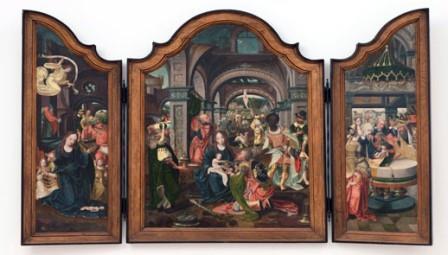The procedure and earlier recommendations
The restitution application was prompted by a visit the Applicant made to the exhibition Looted, But From Whom? in 2007. This was followed by contact between the Applicant and the Origins Unknown Agency (hereinafter referred to as the BHG). Thereafter in the first instance in 2007, 2009 and 2010 the Applicant requested the then State Secretary for Education, Culture and Science (OCW) to restitute twenty-three NK works, including those currently being claimed. The State Secretary asked the Committee to issue advice about this request. This concerned case RC 1.106. While that advice procedure was pending, the Applicant withdrew her claim to the seven NK works currently being claimed and two other NK works. The final advice in case RC 1.106 of 13 October 2011, which was to reject the Applicant’s claim, therefore concerned fourteen NK works. The State Secretary rejected the restitution application in a decision dated 3 November 2011.
The Applicant asked the Minister to revise this decision. In response to this request, on 27 January 2014 the Minister asked the Committee to issue revised advice. This procedure was registered at the Committee as RC 4.142. On 18 May 2015 the Committee advised the Minister to let the decision of 3 November 2011 to stand.
In a letter of 29 May 2014 the Applicant requested the Minister to restitute the seven aforementioned NK works. The Minister laid this claim before the Committee for advice. The Committee conducted an investigation into the facts. The results of the investigation are recorded in a draft investigation report dated 14 December 2015. The Applicant responded to it in a letter dated 31 March 2016. The Committee conducted additional research as a result of this response. The results of this investigation are recorded in a draft report dated 8 June 2016. This report was sent to the Applicant for response. The Applicant responded in a letter dated 3 July 2016.
There was a hearing on 5 September 2016. It was attended on behalf of the Applicant by her hushand BB and her daughter CC. Minutes of this hearing were sent to the Applicant. The Committee conducted a supplementary investigation as a result of this hearing. The results of this investigation are recorded in a draft report dated 10 October 2016. It was sent to the Applicant for response. The Applicant responded to it in a letter dated 25 October 2016.
The Committee adopted the investigation report on 8 November 2016.
The Applicant asserted in writing and at length during the hearing that she objected to the Committee’s procedure because the draft investigation report does not give any weighting to the facts it contains. The Committee considers this objection to be unfounded. The Committee’s procedure involves an investigation of the relevant facts first, followed by the preparation of a draft report. There is no weighing up of the facts at this stage because it would not be correct if the Committee were to interpret the facts before the Applicant has been given the opportunity to respond to this determination of the facts. There would moreover be no clear distinction between establishing the facts and preparing the advice. The Applicant was informed about this in a letter dated 6 July 2016.
